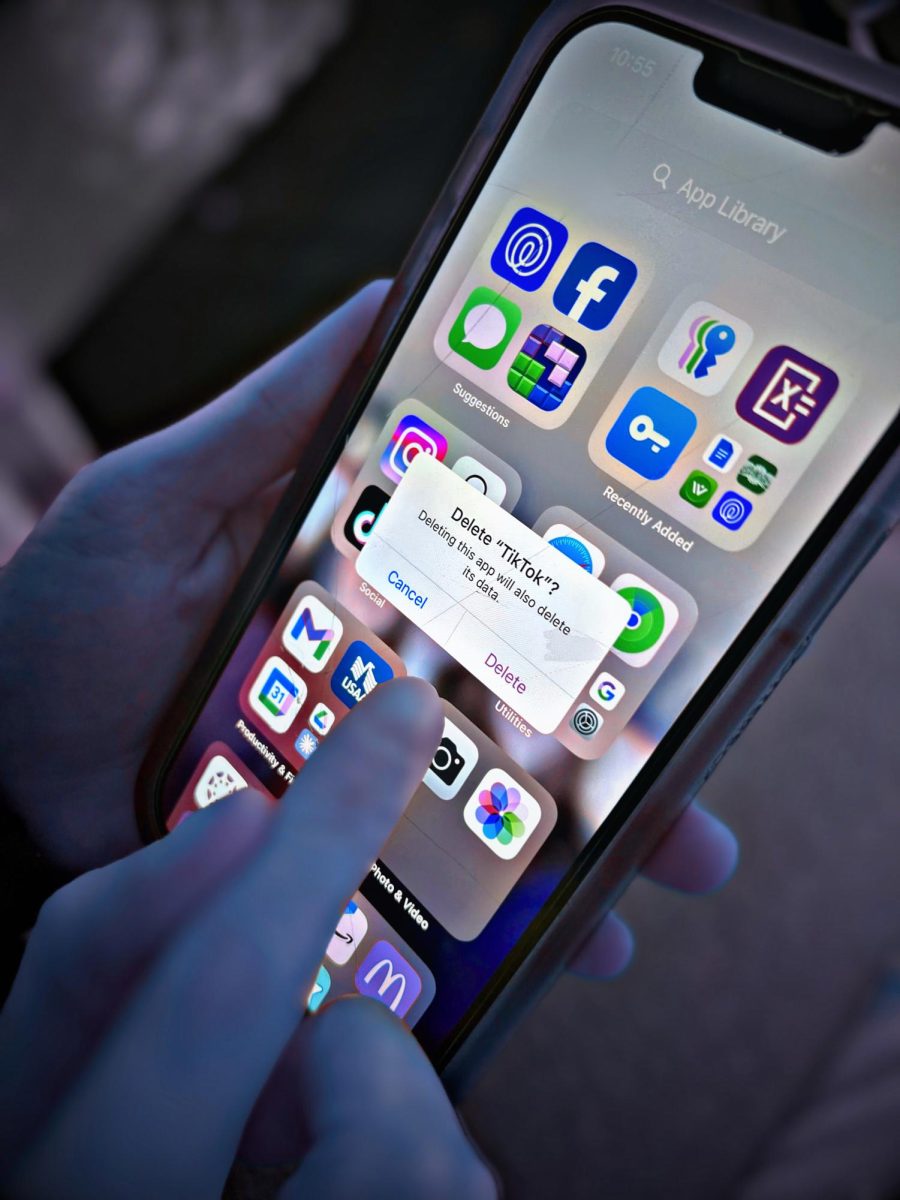It’s a classic tale: you have to study for a test or have so much to do that you tucked your phone away in a corner of the room, hoping to hide from the prying eyes of that addictive, little rectangle. However, those prying eyes catch your gaze during a moment of pure exhaustion and before you know it, you’re scrolling and completely caught off guard. Next thing you know, two hours fly by and nothing has been accomplished. In a world where people are constantly scrolling through social media and being bombarded with notifications, attention spans are at an all time low. Focusing on homework or another arduous task can’t compete with the dopamine rush of scrolling through TikTok, which is wreaking havoc on teenagers’ attention spans.
In 2004, the American Psychological Association conducted a study measuring attention spans by recording how long participants focused on a specific activity. The average attention span recorded was two and a half minutes. In 2012, the average attention span decreased to 75 seconds, and in the last few years, it became much shorter at just 47 seconds. Children as young as two to four years old are constantly being exposed to screens, averaging two and a half hours of screen time per day. In addition, insufficient sleep has been shown to impair concentration, contributing to declining attention spans observed in many children and teenagers—thereby increasing their susceptibility to distractions. Whenever someone is interrupted while doing a certain task, it takes longer for the brain to reorient itself and concentrate again, resulting in decreased productivity. The American Psychological Association also found that stress correlates with attention switching, meaning that the more someone switches their attention, such as working while constantly checking their email, the higher their stress level is.
Not only have screens destroyed students’ attention spans, but they have also impacted their creative and critical thinking abilities. The most creative ideas have been known to emerge during times of boredom. However, due to the constant distraction, entertainment, and stimulation provided by screens, those rare moments when students might otherwise let their minds wander and generate creative ideas have ceased. As a result, there has been a significant decline in students’ critical thinking abilities.
Because of new technologies, such as the emergence of AI, many adolescents have become over reliant on using AI for ideas, schoolwork, or to simply write them an email. Their unique critical thinking skills are being replaced by computers, which are devoid of the original human thought that adds spark to new ideas and tasks. This issue continues to spark debate in classrooms. Technology can cause students to be more susceptible to distractions during the instructional period. The Texas government has passed a new law, House Bill 1481, which restricts student access to personal communication devices, such as cell phones and smartwatches, during the school day. According to the Texas Tribune, the law has received mixed reviews. Supporters claim that the bill reduces distractions and improves mental health. Critics claim that the bill presents a safety issue as students will have limited access to contacting their parents. Regardless of the implications of this bill, the impact of phones and advanced technology on the adolescent brain can’t be understated. As AI crushes cognitive thinking abilities, there are actions people can take to regain control of their brain and attention spans. While doing a task, students should silence their phones and put them in another room to minimize distractions. Setting aside periods of focused work while taking breaks is a way to increase productivity. In addition, getting enough sleep each night and discovering screen-free hobbies can help adolescents concentrate and break free from social media’s addictive grip.



